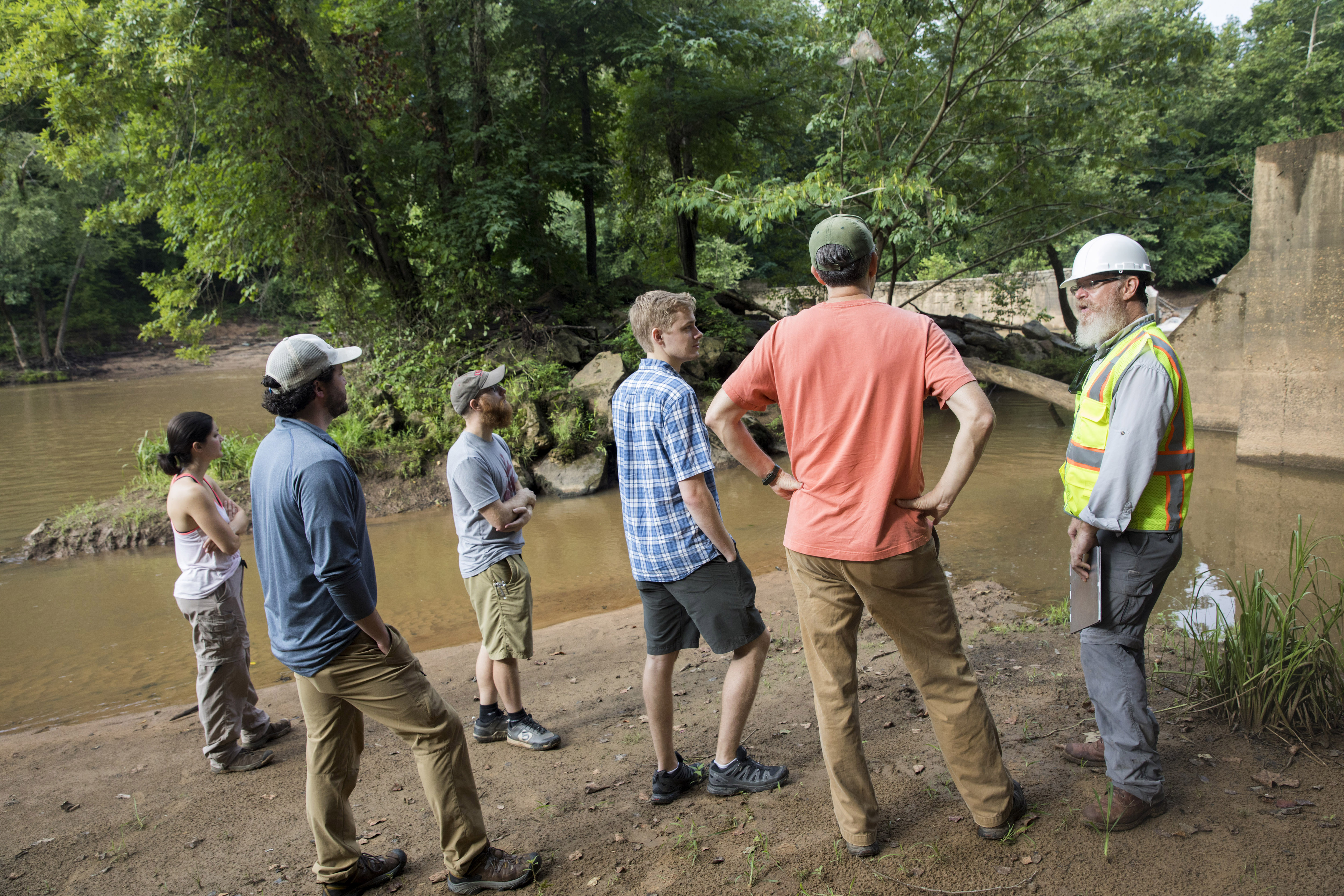Under the direction of University of Georgia faculty experts and partners from multiple agencies, workers have modified portions of White Dam, a stone and masonry structure that spans the Middle Oconee River upstream from its confluence with the North Oconee River.
The dam is owned and managed by UGA’s Warnell School of Forestry & Natural Resources. Warnell faculty and students spearheaded multiple studies exploring how modification of the dam could improve aquatic connectivity and wildlife mobility.
During the early 20th century, the dam provided hydroelectric power for a nearby textile manufacturing facility, but it has been inoperable for decades.
“The dam doesn’t serve any economic or flood control function,” said James Shelton, an associate professor of fisheries in the Warnell School. “But we designed this process with historic preservation in mind. We removed a portion of the dam and stabilized other portions that have the greatest historical significance.”
Workers even used native stone to construct the dam to stabilize remaining structures.
Perhaps the greatest impetus for modifying the dam was its effect on fish and other wildlife. While there were two large breaches in the dam, it was difficult for many fish species to travel upstream, because they cannot swim fast enough through rushing water. Slowing this flow of water by modifying the dam allows native fish, such as the Altamaha shiner, robust redhorse and the American shad, to navigate the river more easily.
A more open river also allows for the easy passage of recreational watercraft like canoes and kayaks.
“This was also a safety issue for us, because the configuration of the water passageways through the dam was inherently dangerous for boaters,” Shelton said.
Another safety concern associated with the dam was the accumulation of debris. During high flow periods, woody debris collected on the two existing openings, and Warnell staff had to periodically remove the branches, scrap wood and garbage carried down river, which can be dangerous work.
UGA faculty and staff worked on the project with a number of agencies, including the U.S. Fish and Wildlife Service, the Army Corps of Engineers, the Georgia Department of Natural Resources, American Rivers, the Environmental Protection Agency and the Nature Conservancy. Personnel from UGA’s Odum School of Ecology and College of Engineering also contributed to the project.
Now that the project is completed, it could serve as a model for other similar structures throughout the U.S. that are likely to be evaluated in the future.


